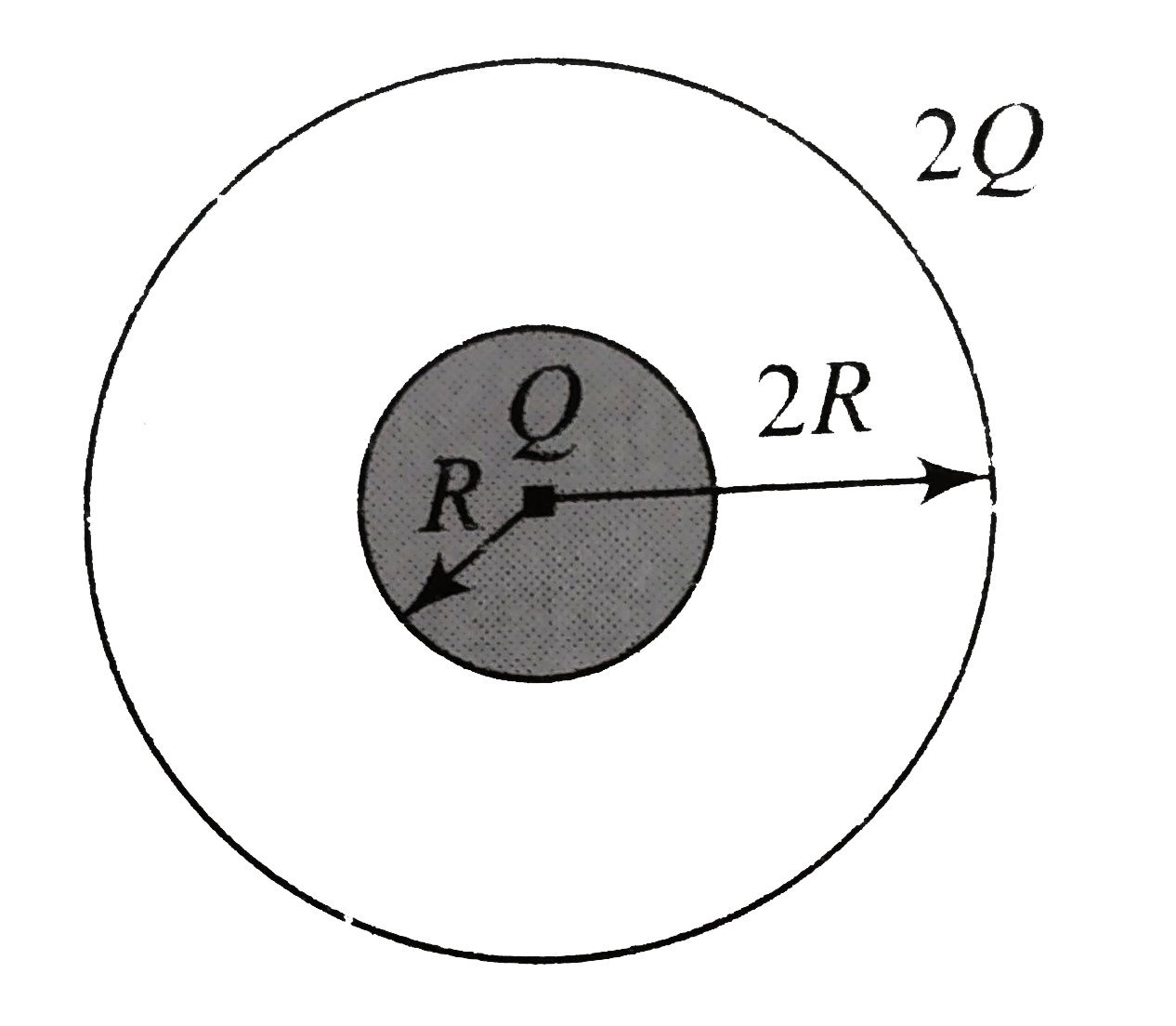A thin spherical shell of radius R has charge Q spread uniformly over its surface. Which of the following graphs most closely represents the electric field E(r) produced by the shell in the range 0≤r<∞, where r is the distance from the centre of the shell?
To solve the problem of determining the electric field E(r) produced by a thin spherical shell of radius R with charge Q uniformly spread over its surface, we can follow these steps:
Step 1: Understand the electric field inside the shell
For a uniformly charged thin spherical shell, the electric field inside the shell (for r<R) is zero. This is due to the symmetry of the charge distribution. Therefore, we can conclude:
E(r)=0forr<R
Step 2: Calculate the electric field outside the shell
For points outside the shell (for r≥R), the electric field can be calculated using Gauss's law. The electric field at a distance r from the center of the shell is given by:
E(r)=kQr2
where k is Coulomb's constant.
Step 3: Analyze the behavior of the electric field
- At r=R, the electric field reaches its maximum value:
E(R)=kQR2
- As r increases beyond R, the electric field decreases with the square of the distance:
E(r) decreases as r increases
Step 4: Graph the electric field
- For r<R, the electric field E(r)=0.
- At r=R, the electric field has a maximum value.
- For r>R, the electric field decreases as 1r2.
Final Graph Representation
The graph of E(r) versus r would look like this:
- The electric field is zero from r=0 to r=R.
- At r=R, the electric field reaches a maximum.
- For r>R, the electric field decreases as 1r2.
Summary of the Solution
- For r<R: E(r)=0
- At r=R: E(R)=kQR2
- For r>R: E(r)=kQr2
For a uniformly charged thin spherical shell, the electric field inside the shell (for r<R) is zero. This is due to the symmetry of the charge distribution. Therefore, we can conclude:
E(r)=0forr<R
For points outside the shell (for r≥R), the electric field can be calculated using Gauss's law. The electric field at a distance r from the center of the shell is given by:
E(r)=kQr2
where k is Coulomb's constant.
- At r=R, the electric field reaches its maximum value:
E(R)=kQR2
- As r increases beyond R, the electric field decreases with the square of the distance:
E(r) decreases as r increases
- For r<R, the electric field E(r)=0.
- At r=R, the electric field has a maximum value.
- For r>R, the electric field decreases as 1r2.
The graph of E(r) versus r would look like this:
- The electric field is zero from r=0 to r=R.
- At r=R, the electric field reaches a maximum.
- For r>R, the electric field decreases as 1r2.
- For r<R: E(r)=0
- At r=R: E(R)=kQR2
- For r>R: E(r)=kQr2
Topper's Solved these Questions
- XII BOARDSBOOK - XII BOARD PREVIOUS YEAR PAPER ENGLISHCHAPTER - XII BOARDSEXERCISE - SET II
8 Videos
- XII BOARDSBOOK - XII BOARD PREVIOUS YEAR PAPER ENGLISHCHAPTER - XII BOARDSEXERCISE - SET III
7 Videos
- XII BOARDSBOOK - XII BOARD PREVIOUS YEAR PAPER ENGLISHCHAPTER - XII BOARDSEXERCISE - SECTION - B
7 Videos
- SAMPLE PAPER 2019BOOK - XII BOARD PREVIOUS YEAR PAPER ENGLISHCHAPTER - SAMPLE PAPER 2019EXERCISE - SECTION D
6 Videos
Similar Questions
A spherical shell of radius R has a uniformly distributed charge ,then electric field varies as
View SolutionA metallic spherical shell of radius R has a charge -Q on it. A point charge +Q is placed at the centre of the shell. Which of the graphs shown below may correctly represent the variation of electric field E with distance r from the centre of shell ?
View SolutionConisder a thin spherical shell of radius R with centre at the origin, carrying uniform poistive surface charge denisty. The variation of the magnitude of the electric field ∣∣→E(r)∣∣ and the electric potential V(r) with the distance r from the centre, is best represented by which graph?
View SolutionWhich one of the following graphs represents the variation of electric field with distance r from the centre of a charged spherical conductor of radius R?
View SolutionA charge Q is uniformly distributed in a dielectric sphere of radius R (having dielectric constant unity). This dielectric sphere is enclosed by a concentric spherical shell of radius 2R and having uniformly distributed charge 2Q. Which of the following graph correctly represents variation of electric field with distance r from the common centre?

View SolutionFind the gravitational potential due to a spherical shell of mass M and radius R at r<R and r>R, where r is the distance from the centre of the shell.
View SolutionFigure shows two concentric shells of radii a and b uniformly distributed charges q and -q. Which of the following graphs gives correct variation of electric field intensity E with the distance r from the centre?

View SolutionConsider the force F on a charge 'q' due to a uniformlycharged spherical shell of radius R carrying charge Q distributed uniformly over it. Which one of the following statements is true for F, if 'q' is placed at distacen r from the centre of the shell?
View SolutionA spherical shell made of plastic, contains a charge Q distributed uniformly over its surface. What is the electric field inside the shell? If the shell is hammered to deshape it without altering the charge. Will the field inside be changed? What happend if the shell is made of a metal?
View SolutionA spherical shell of radius R carries a uniformly distributed charge q. The electrical forces arising cause the ex-pansion of the shell. Find the mechanical stress in the shell.

View Solution